Nestled in a snowy mountain valley in Japan, discover the snow monkeys – a cute red-faced species of Macaque with extra fluffy fur to withstand freezing temperatures. The most unique characteristic of this cheeky primate is their love of bathing in the thermal hot springs. Watch them relaxing in the wild, soaking in the steamy waters as they warm themselves in Mother Nature’s jacuzzi — just like humans! Don’t miss visiting the Snow Monkey Park on your Japan itinerary.
The Story of the Snow Monkeys in Japan
The beautiful Snow Monkeys originally lived further north in Japan. However, the increasing deforestation pushed the animals further south towards the spring towns of Yudanaka and Shibu — and closer to farmland. When they started stealing produce from the local farms, the farmers deemed them ‘pests’ and began killing them.
Seeing this, a local man named Soga Hara decided to create the Jigokudani Park in 1964: a place where Snow Monkeys could live safely in the wild. How the snow monkeys ended up bathing in the hot springs is not completely clear. However, there are a few theories:
- The Japanese Snow Monkeys like to wash their food before eating. It’s said that after dropping fruit in the water, the monkeys realized how relaxing and warm the water was.
- This area is home to many Onsens used by the local people. It’s thought that the monkeys may have observed humans bathing in the springs and began to mimic this behavior.
Whatever the reason, the snow monkeys now have an infatuation with bathing in the hot waters. It’s something unique to see these fluffy creatures kicking back and relaxing in the steamy pools — unbelievable!

Tip: Did you know that Jugokudani Valley means ‘Hell’s Valley’? This is because of the difficult living conditions, with below-freezing temperatures, thick snow, volcanic activity, and steep cliffs.
Snow Monkey Park Experience
The red-faced snow monkeys in Japan, known officially as the Japanese Macaque, are an incredibly unique species. They can survive in extremely low temperatures (-20°C!) because of their extra fluffy fur, which looks extra cute covered in snowflakes. (Watch a livestream here)
This particular troop of monkeys lives in Jugokani Valley, closeby to Yudanaka Onsen, a hot spring town.
The Hot Spring Monkeys, Japan
It’s truly a bucket list experience to witness the monkeys bathing in the onsens (natural hot pools), looking so relaxed in the picturesque snowy landscape. Not only do they use the pools to relax, but to wash themselves, drink, and keep warm during the chilly winter. Observe each of their little personalities as they take a dip and roam free and wild in the forest.
Tip: Don’t forget to bring your best camera! You can get the most beautiful photos of the snow monkeys in the hot springs in Japan. See what we carry in our camera bag.
The Japanese hot spring monkeys are not living in captivity; they are free to come and go as they please, creating a tranquil and natural environment. Because of this, they are very calm and seem unphased by people’s presence. They will walk straight past you, unlike places like Monkey Forest in Ubud, Bali, where monkeys will try to steal your things.
Also read about visiting the Deer in Nara Park, Japan.
The Forest Walk to the Snow Monkeys
To get to the thermal spring monkeys, you’ll walk through a beautiful snowy forest on a scenic path. It’s roughly a 2 km walk from the entrance along a winding mountain trail, bordered by mammoth pine trees and a pretty river. During the winter months, there’s snow covering the landscape, which makes the trees look extra beautiful; it’s a winter wonderland!
Tip: The walk can take between 20-30 minutes, depending on your pace. As you go, you’ll see signs that tell you the remaining distance. There are only 2 sets of stairs during the hike, and the path doesn’t incline much, so it’s an accessible hike for all walkers.
As you walk along the path, you won’t see any snow monkeys (they’re all too busy hanging out in the springs!). However, once you’ve reached the ticket office at the end of the path, you’ll begin to see the fluffy snow-covered primates in the trees.
Note: Make sure to wear suitable shoes for trekking in the snow, ideally with a good grip.
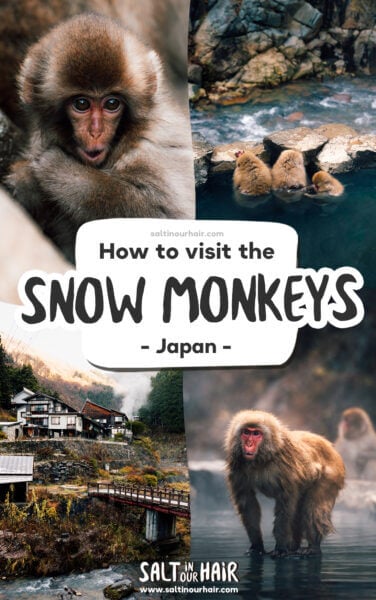
After you’ve observed the monkeys in the snow for some time, walk back to the entrance (approximately 25 minutes). Warm yourself up with a delicious lunch or a homemade apple pie at Enza Cafe.
Entrance Fee and Opening Times
A ticket for the Snow Monkey Park in Japan is:
- 800 yen (6 USD) for adults
- 400 yen (3 USD) for children
You can purchase your tickets at the office on arrival. See opening times and ticket prices here.
The park is open all year round. However, we don’t recommend visiting in the summer as during this time. It’s the cold conditions that make this experience special, as without it, the thermal spring monkeys have no desire to bathe. Also note that after the ticket office, it’s actually a small park and if you don’t go early it could feel quite busy.
Opening times are as follows:
- 8.30 AM – 5 PM April to October
- 9 AM – 4 PM November to March
The Japanese Hot Springs
It’s not only the Japanese monkeys that like the hot springs; human Onsens are an essential part of Japanese culture, with nearly 3000 nationwide. The resorts, built around natural thermal pools, provide a tranquil place for people to relax. Each onsen you visit is said to have different health benefits, such as for stomach problems or back injuries.
Yudanaka Onsen
You’ll find most hot springs in nearby Yudanaka Onsen, a beautiful town surrounded by scenic mountains. Do as the locals do and grab your traditional robe (Yukata) and wooden sandals (Geta) and relax in the soothing waters.
You must respect the rules and regulations of Onsen culture:
- Refrain from talking to provide the most peaceful environment possible.
- Patrons are generally naked.
- Tattoos are prohibited in most onsens because of the long-running stigmatization of tattoos in Japan. Because Yudanaka caters to many tourists for the Snow Monkey Park, they are a bit less strict with this rule. However, you should always check beforehand!
- The onsens in Yudanaka are mainly split by gender.
Tip: Many of the hotels in Yudanaka have their own private onsens on site.
Shibu Onsen
We recommend also visiting Shibu Onsen, a small hot spring town between Yudunaka and the Snow Monkey Park. This particular town has a history that spans 1300 years and is home to 9 public baths used by locals as part of their daily routine. It’s beautiful to walk around, with lantern-lit cobbled streets and ancient wooden houses that are hundreds of years old.
Tip: Many of the public baths in Shibu Onsen are reserved for hotel guests and locals only. Only the largest bath, named O-yu, is available for day use and costs 500 yen (3 USD) for entry.
Togakushi Shrine
Discover the majestic beauty of the Togakushi Shrine! This stunning hiking area is home to 5 temples located just north of Nagano city. Each temple has its own unique characteristics and is dedicated to a different deity.
However, the real magic of this area is in nature; you’ll find gigantic towering cedar trees, some of which are over 800 years old! Their size is hard to fathom, and during the winter, when it’s snowy, it creates a storybook setting.
The route makes its way along the different shrines, each around 2 km apart, and is easy to reach from Nagano train station. You can see all the bus routes on the official temple website.
Tip: The Shinkansen train from Tokyo to Nagano is eligible for users of the Japan Rail Pass. Buy your Japan Rail Pass in advance here.
Try Soba Noodles!
Soba noodles are incredibly popular in this area and a must-try while visiting Togakushi village. It’s said that they were offered as a special treat to pilgrims who visited the shrines. There’s even a soba noodle museum in Togakushi where you can learn about the history of soba noodles and try making them yourself!
Open 9 AM – 5 PM (closed on the third Wednesday of every month). Tickets cost 200 yen (1.50 USD)
Shiga-Kogen
Shiga-Kogen is a popular ski resort (and the largest in Japan!) that is situated close to Snow Monkey Park. If you’re visiting between December and May, try your hand at skiing on the runs of the 2000-meter-high peaks — an adventure on your trip to Japan.
You can purchase a day lift pass online for 7500 yen (51 USD). This pass gives you access to the 48 lifts in the area, so you’ll have plenty to explore.
Tip: If skiing isn’t your thing, visit during the fall months, when you can hike among the vibrant foliage of the trees.
See availability for a day tour to Shiga Kogen and the Snow Monkey Park (including sledding!)
Getting to Shiga Kogen: Jump on the buses that leave every hour from Yudunaka. These also stop off at Shibu Onsen, so if you desire, after your day of skiing, you can soothe your tired muscles in the hot spring waters — bliss!
Best Cafes and Restaurants
While visiting the hot spring monkeys in Japan, make sure to also factor in time to visit some of the delicious restaurants. Treat yourself to a warm apple pie at Enza Cafe after your visit to Snow Monkey Park, and make sure to try the local soba noodles (Uzuraya is one of the most famous places!).
- Enza Cafe
- The Farmhouse
- Japanese Dining Goen
- Uzuraya (Togakushi)
Where to Stay
The older part of Yudanaka is an especially nice location with a charming, old-town feel. We stayed at Koishiya Ryokan, which provided some great services, such as free train station pick-up, transport to the start of the Snow Monkey Park hiking trail, and a private onsen booking service.
Our stay was a more traditional Ryokan: this involves a customary Japanese sleeping arrangement, with a futon on the floor and pillows with beans inside. The hotel asks you to prepare the futon yourself, changing the room from a living room into a bedroom at night. Although it might not be the most comfortable (!), it’s a fun and immersive insight into Japanese culture.
Another option is to stay close to the train station in Yudanaka or make a day trip to see the snow monkeys from the larger cities in the area: Nakano (15 min) or Nagano (1 hour away).
How Many Days Do I Need to Visit the Snow Monkeys?
Although you can visit the Snow Monkey Park on a day trip from Tokyo (3 hours one way), we recommend staying overnight to enjoy all the things to do in the area:
- Day 1: Arrive at lunchtime and spend the afternoon and evening in Yudanaka. Visit the Shibu Onsen if you have time.
- Night 1: Stay the night in a traditional Ryokan. For dinner, try soba noodles!
- Day 2: Visit the Snow Monkeys early in the morning. After a late breakfast at Enza Cafe, head back to Yudanaka train station at midday to continue your Japan itinerary.
How to Visit the Monkey Hot Springs in Japan
Many people choose to visit the Snow Monkeys on a day trip from Tokyo. However, please remember that it’s a 3-4 hour train ride. The trains in Japan are incredibly easy to use, so it’s worth considering. However, if you have the time, we recommend staying a bit longer in Yudanaka. Alternatively you can also rent a car from Tokyo so you have a bit more flexibility where to go.
We recommend to rent a car in Japan through Rentalcars.com with many rental locations and flexible cancellation. Book your rental car here.
When taking the train from Tokyo station, take the bullet train (shinkansen) directly to Nagano (1 hour 20 mins). From here, take the Nagano Dentetsu Line to Yudanaka or take the bus directly to Snow Monkey Park.
Tip: The Shinkansen train from Tokyo to Nagano is eligible for users of the Japan Rail Pass. Buy your Japan Rail Pass in advance here.
Japan Rail Pass
The Japan Rail Pass gives you unlimited access to all public transport throughout Japan, so it’s a great option if you plan on taking the Shinkansen (bullet train) several times. It’s also multi-use for other trains, ferries, and buses throughout the country. Do note that only Tokyo to Nagano is covered by this pass.
Buy your Japan Rail Pass in advance here
Getting Around
Once in Yudanaka, you can take the bus from the train station to the Snow Monkey Park in just 10 minutes. You’ll get off at an art museum that’s close to the park, and from here, it’s a 10-minute walk to the beginning of the trail.
Tickets: Bus tickets cost 310 yen (2 USD), paid in cash with coins or bills that are no bigger than 1000 yen.
The public transport time schedules on Google Maps are very accurate in Japan, so it’s best to check the most updated times there. Here is the exact route.

Tip: Make sure to check at your hotel on arrival whether they offer a free transport service to the Snow Monkey Park.
Budget for Snow Monkey Park
Aside from the 800 yen (6 USD) entrance fee, you’ll also need to factor in a few other costs for your trip, including accommodation, bus tickets, and any other activities you’d like to try in the area. Because the hot spring monkeys live in a remote mountainous area of Japan, it’s slightly cheaper than visiting bigger cities like Tokyo and Kyoto.
Top Tip: Japan can be an expensive place to travel, so if you’d like to have a quick snack or an affordable takeaway lunch, we recommend going to the supermarkets 7-Eleven, Family Mart, or Lawson. You can find delicious Onigiri (a rice ball with fish inside and packed in crunchy seaweed) or even mix a cup of frozen fruits into a smoothie.
Save money on your travel by purchasing your Japan Rail Pass in advance here
Best Time to Visit the Hot Spring Monkeys
The best season to visit Snow Monkey Park is in wintertime when the cold temperatures motivate the monkeys to bathe in the thermal waters. The snow that falls during this time also creates a winter wonderland for visitors, with the forests looking as if they’ve been dusted with icing sugar.
Top Tips for Visiting Snow Monkeys
Follow these tips to get the most out of visiting Snow Monkey Park in Japan.
- Avoid showing food to the monkeys
- Turn your flash off your camera
- Keep your voice down
- Don’t show your teeth
- Try not to stare the monkeys directly in the eye
- Bring warm clothes in winter (for snowy conditions!)
- Wear suitable shoes for walking, with a good grip
- Take your trash home with you (and travel sustainably)
- You can drink water from the tap in Japan, so bring a reusable water bottle and travel plastic-free!
By purchasing through our links, you support us at no additional cost.
Thank you for your support. ♥️
- Find Hotels via Booking.com
- Find a Rental Car via Rentalcars.com
- Find Flights to Japan via Skyscanner
- Get a Travel Insurance via Heymondo
- Book Tours & Attractions via GetYourGuide
- Book a Bus/Train/Transfer via 12Go

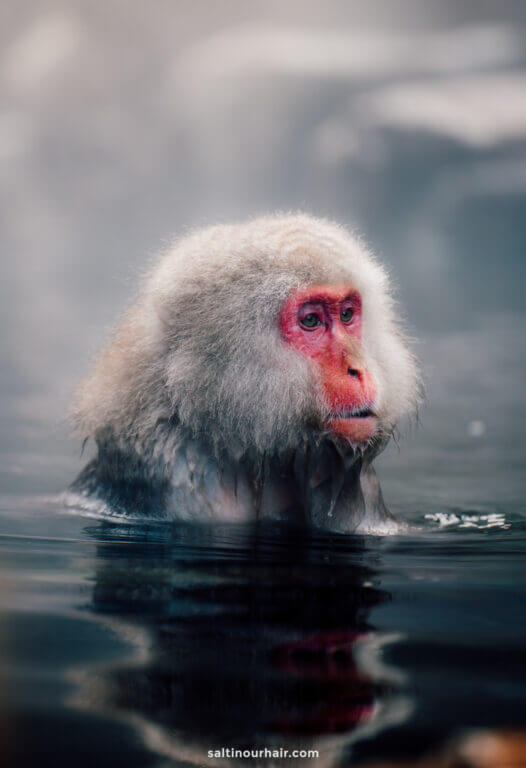
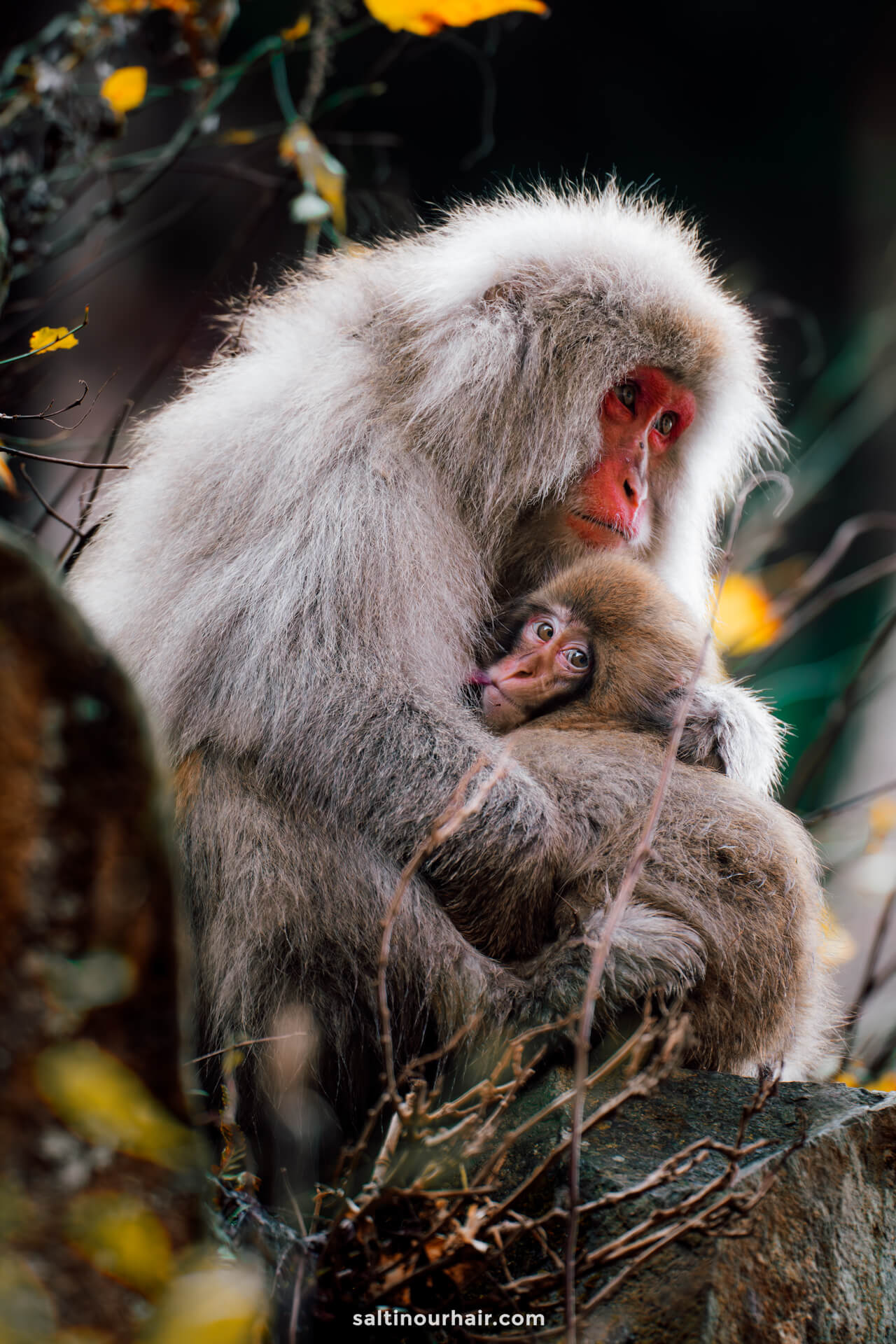
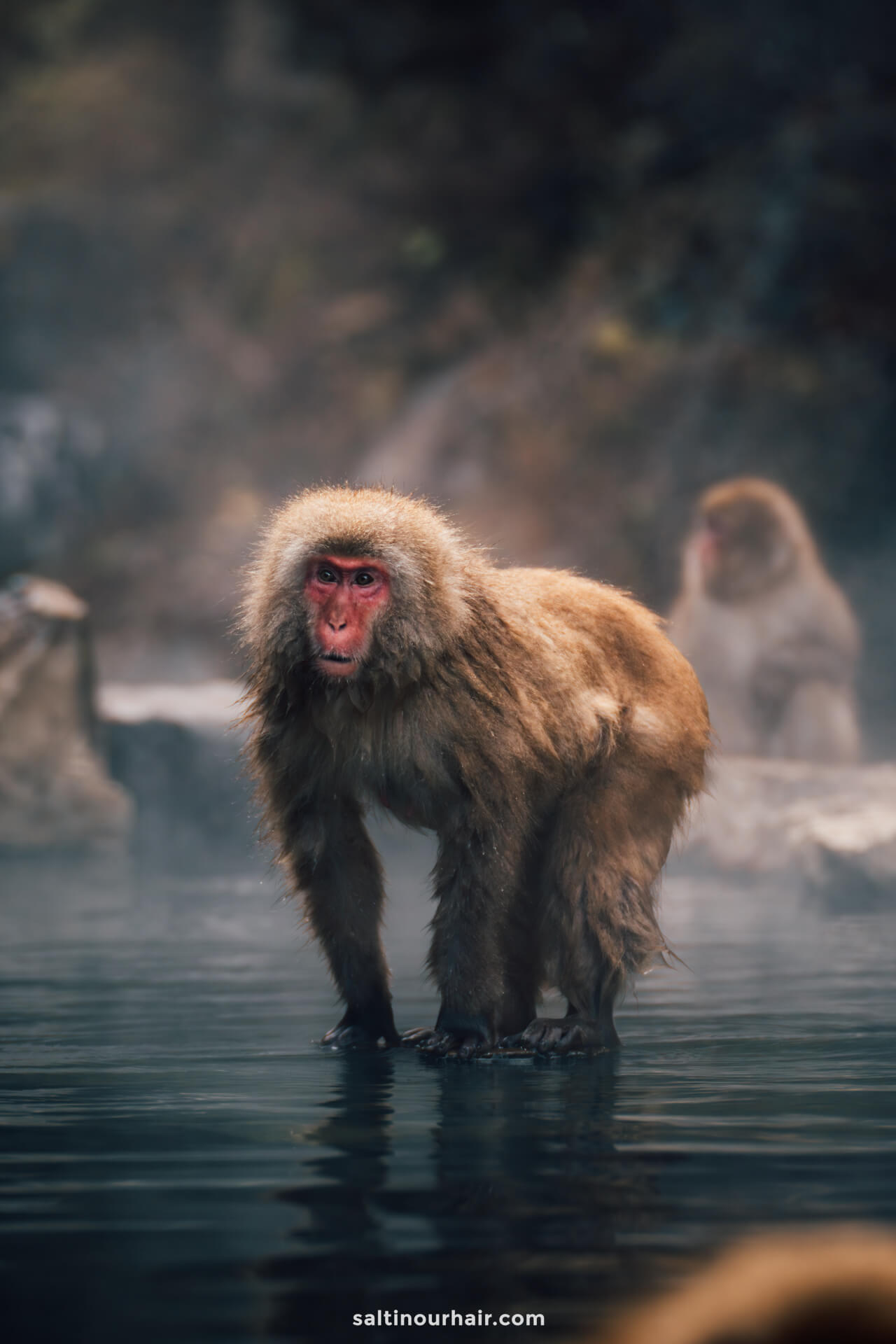
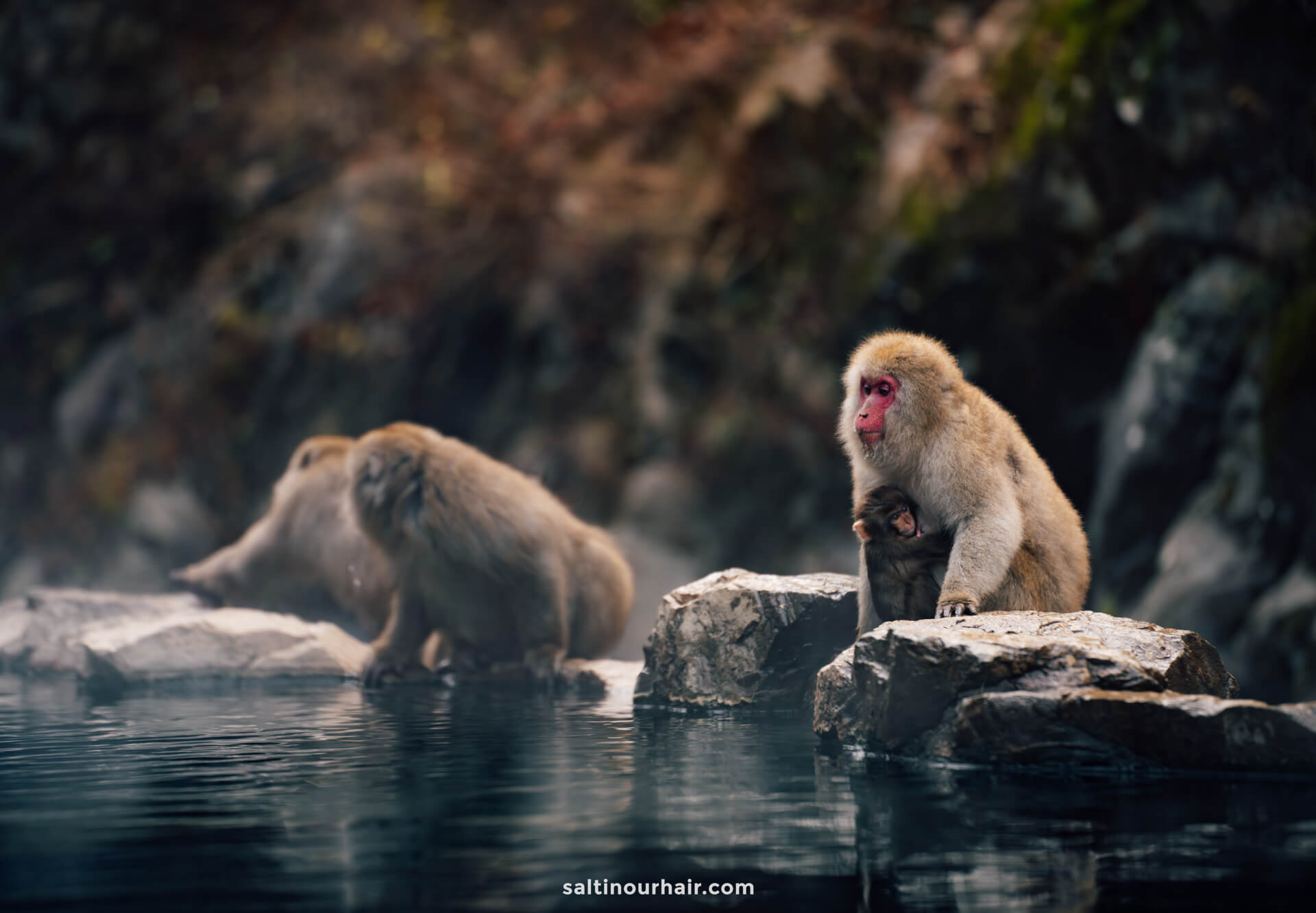
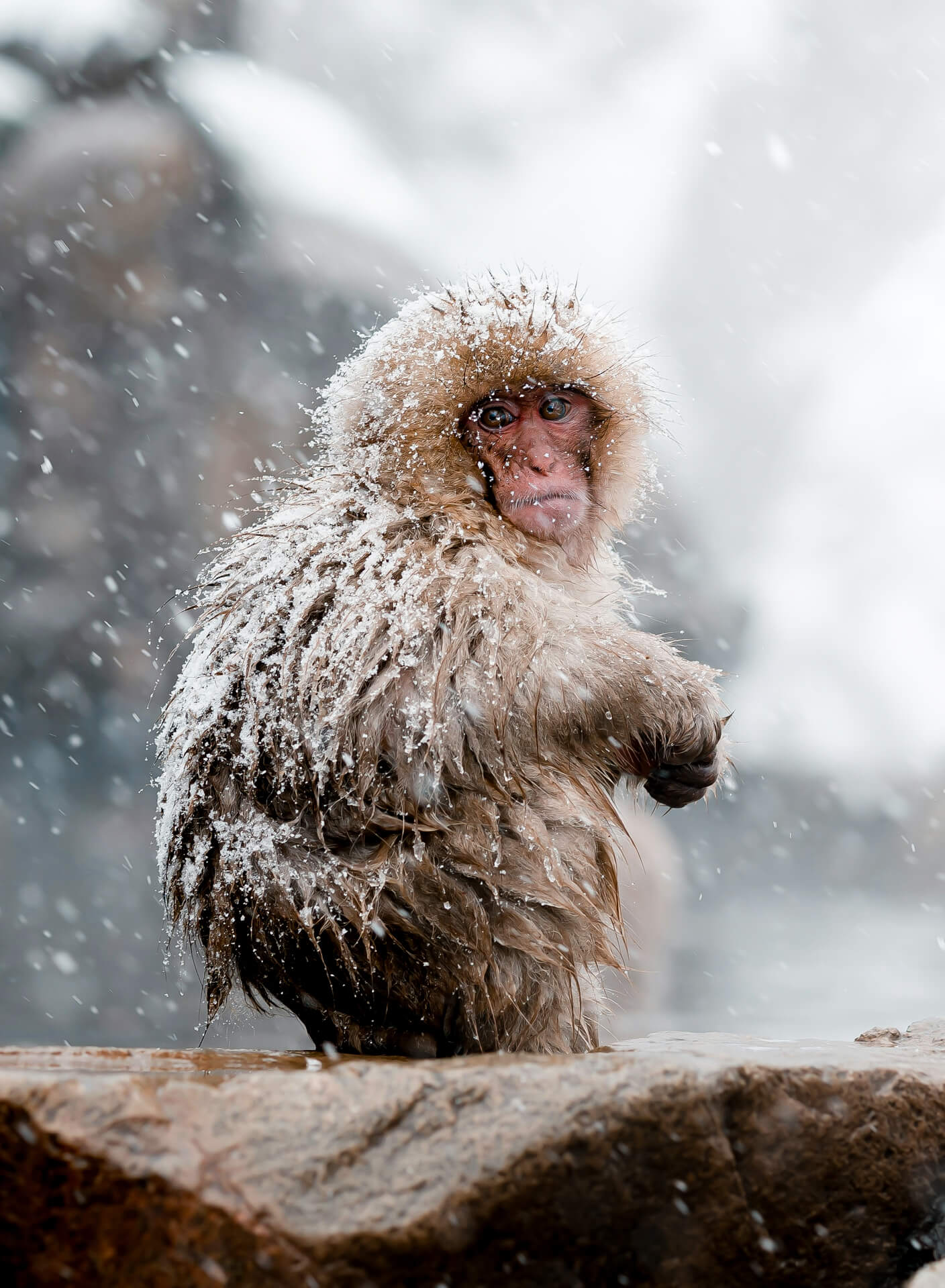
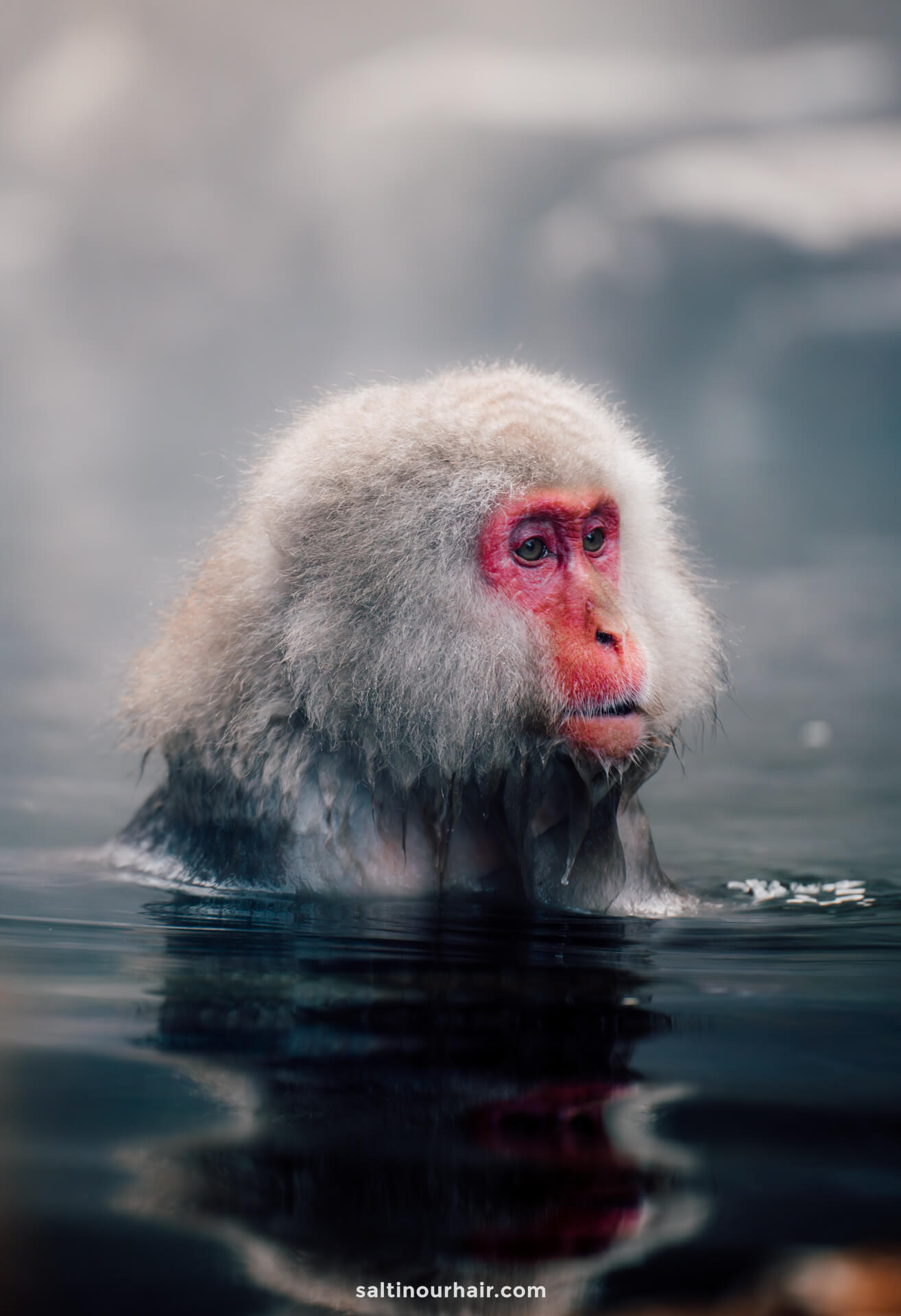
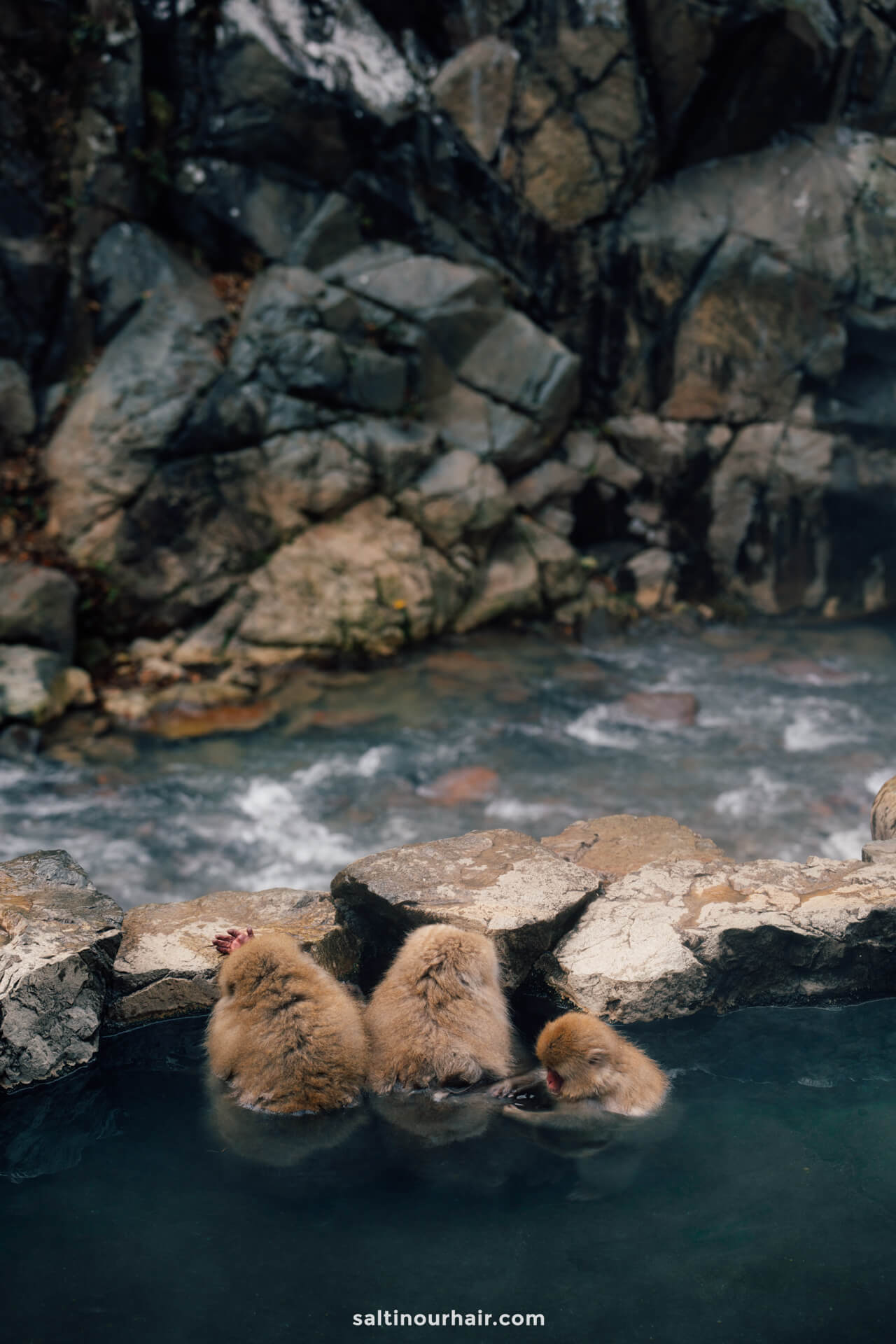
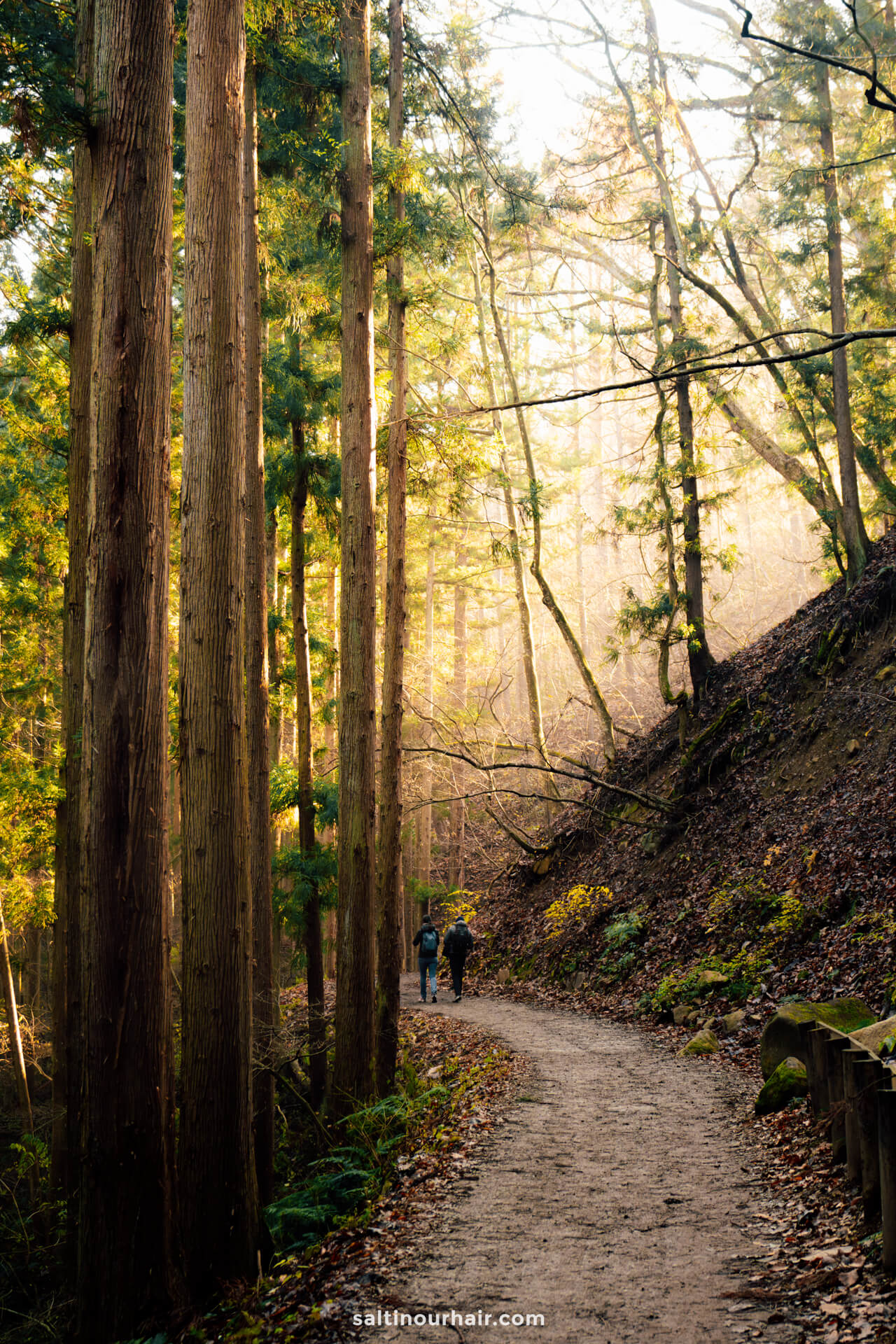
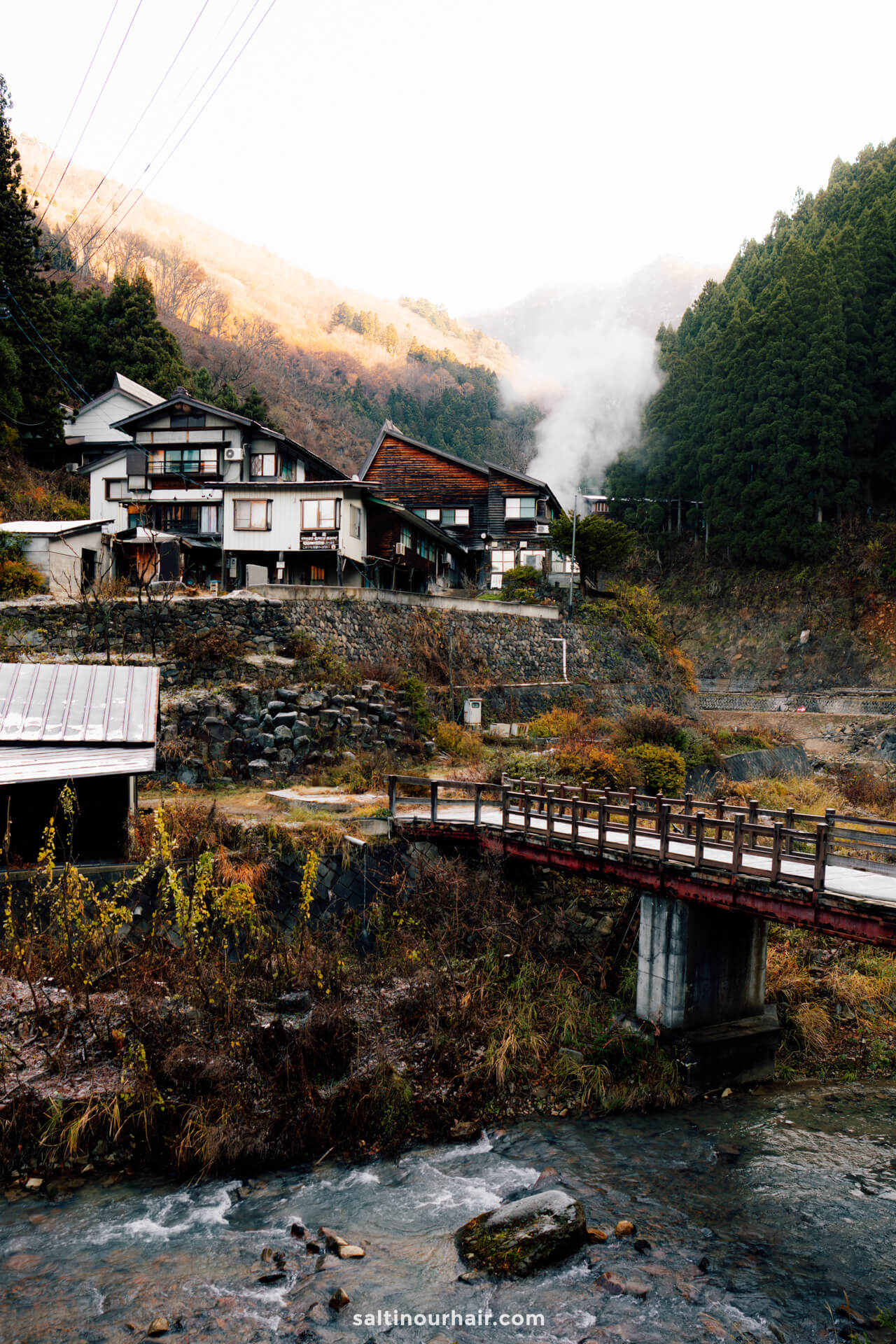
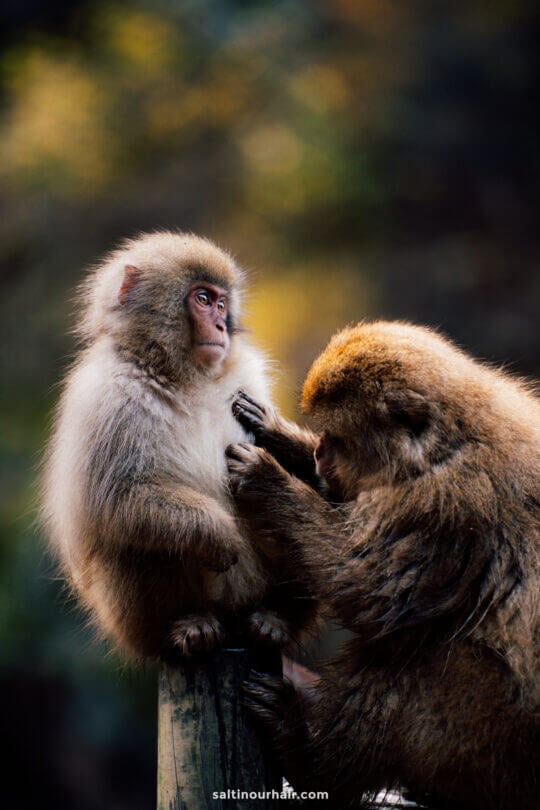
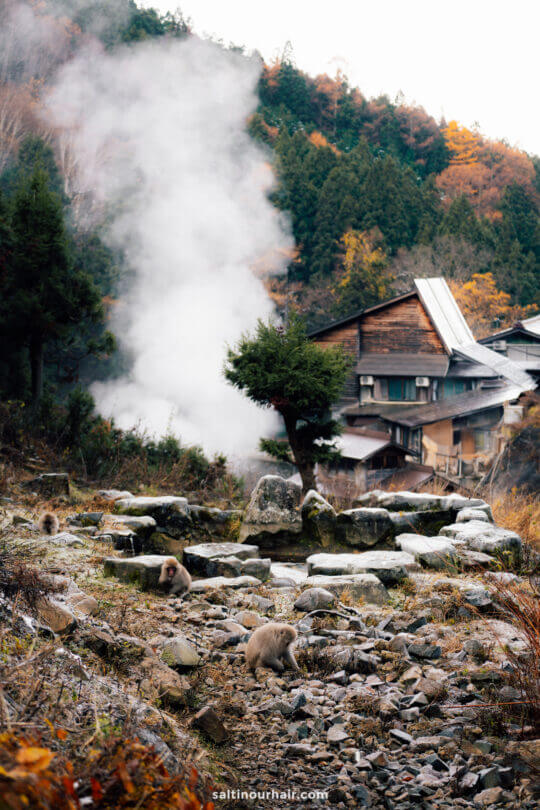
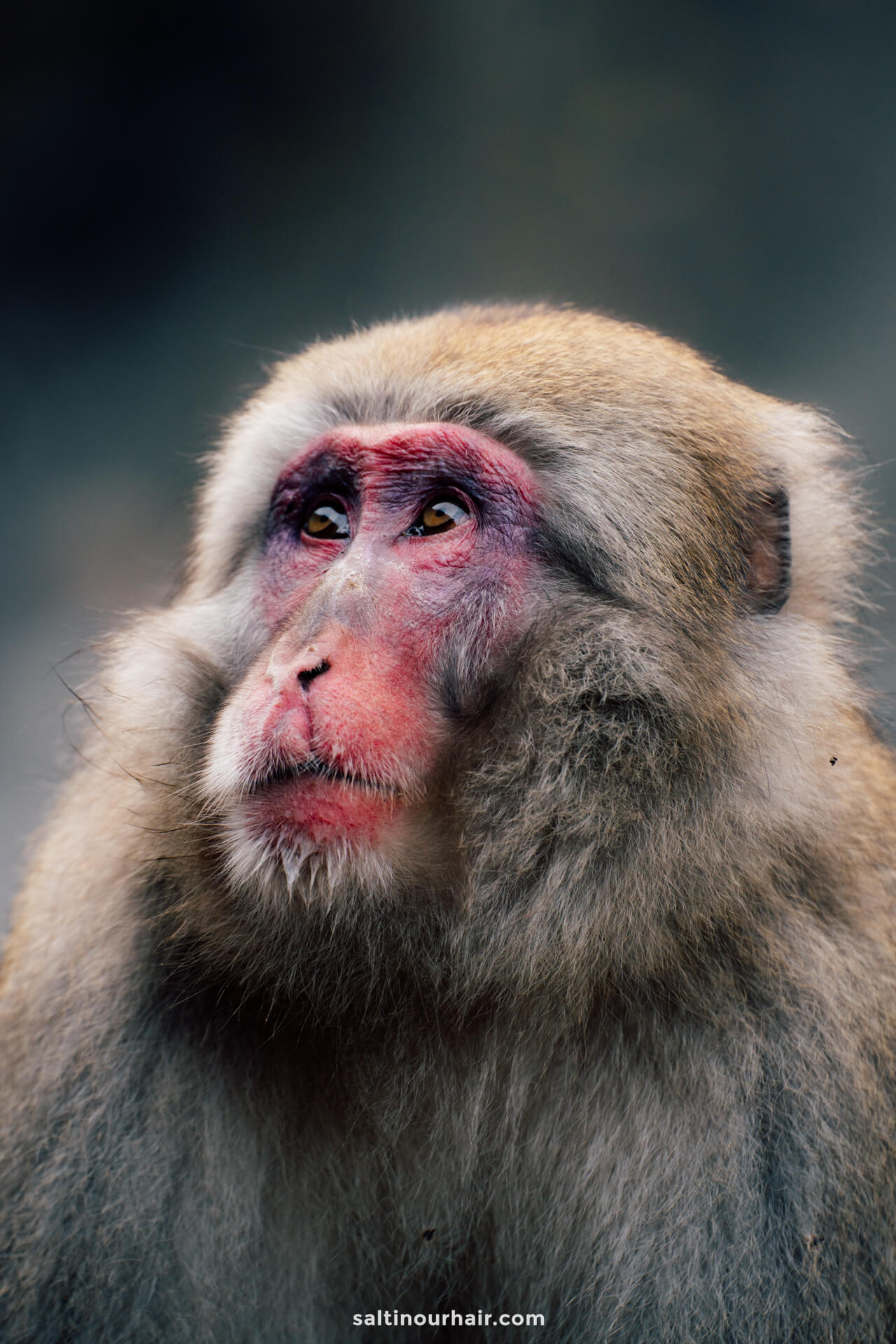
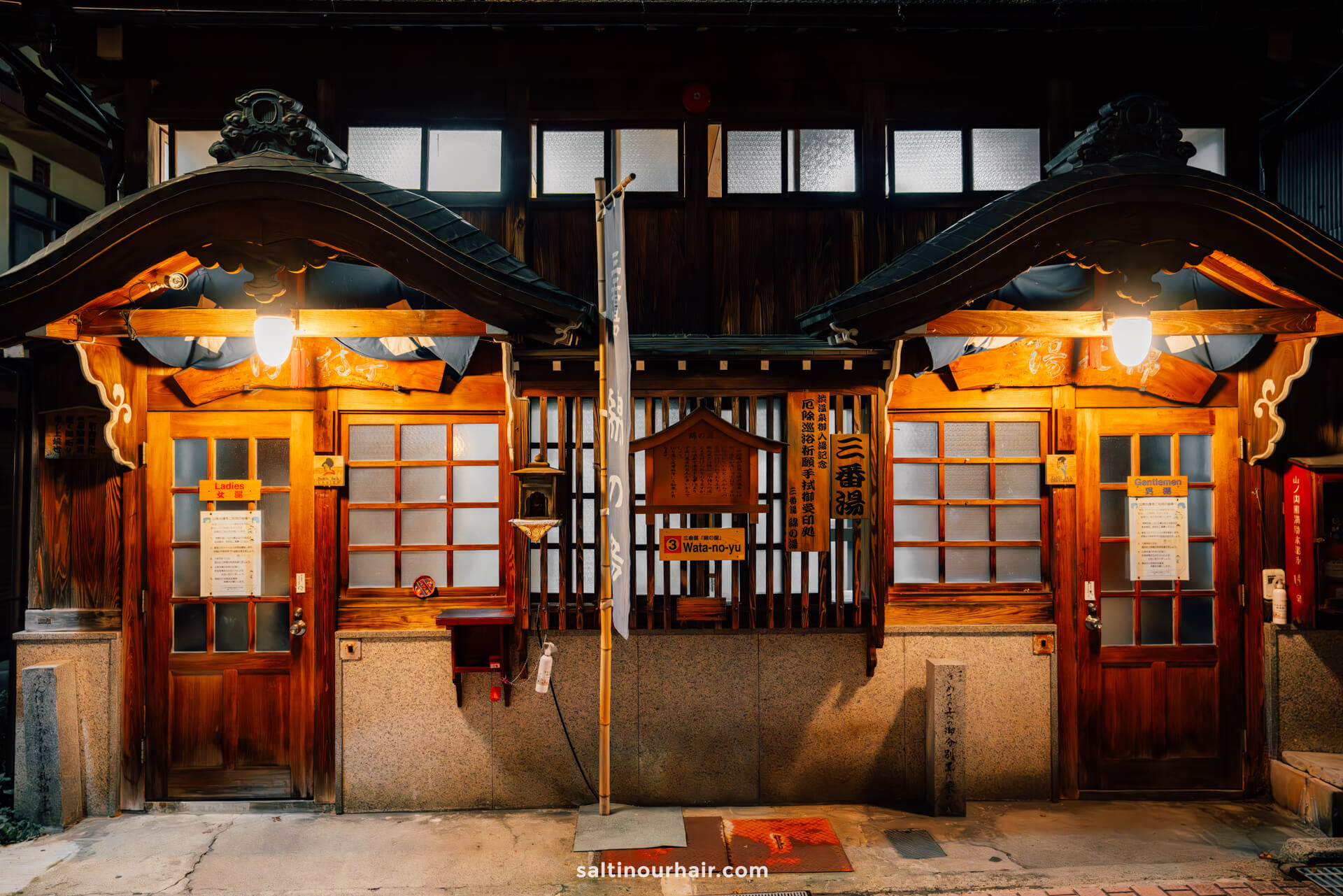
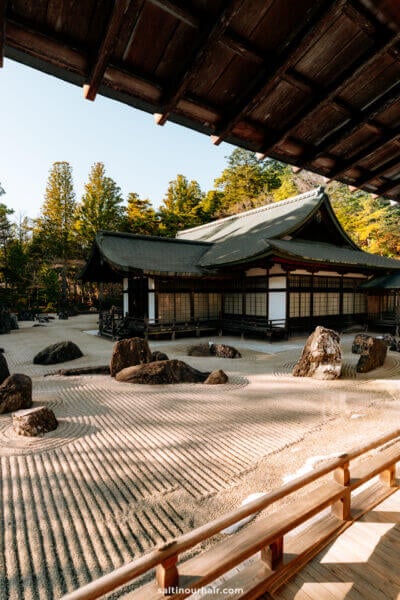
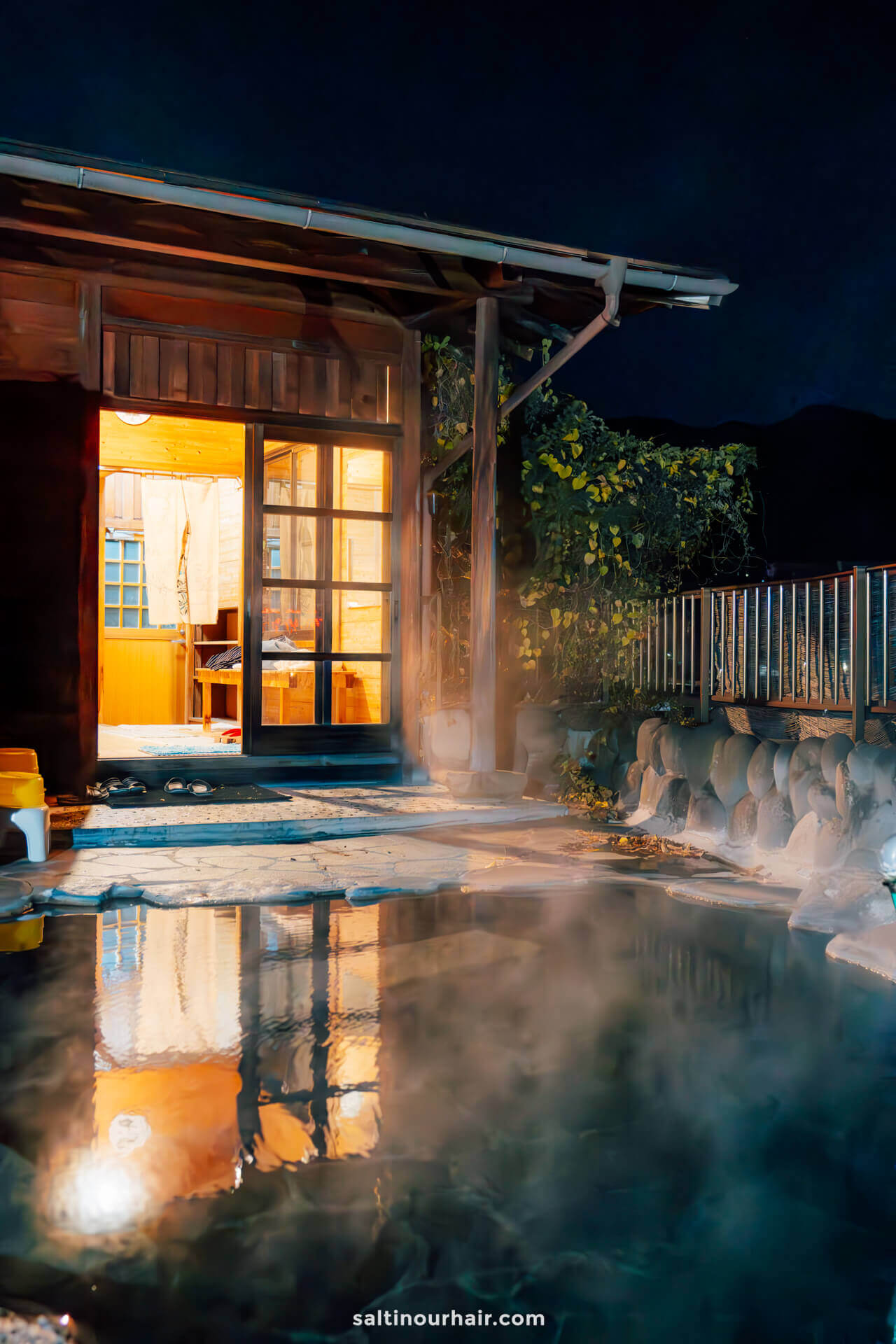
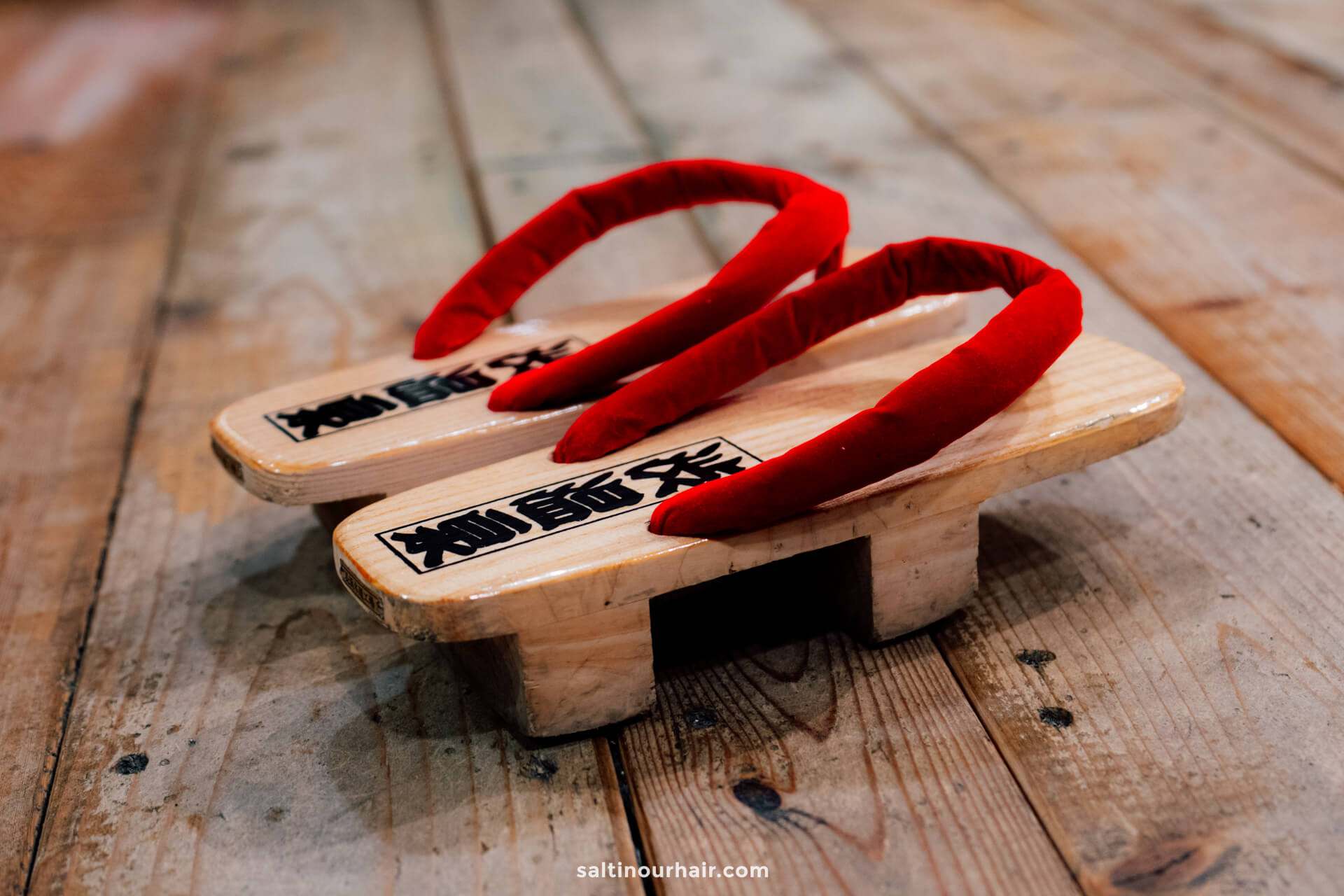
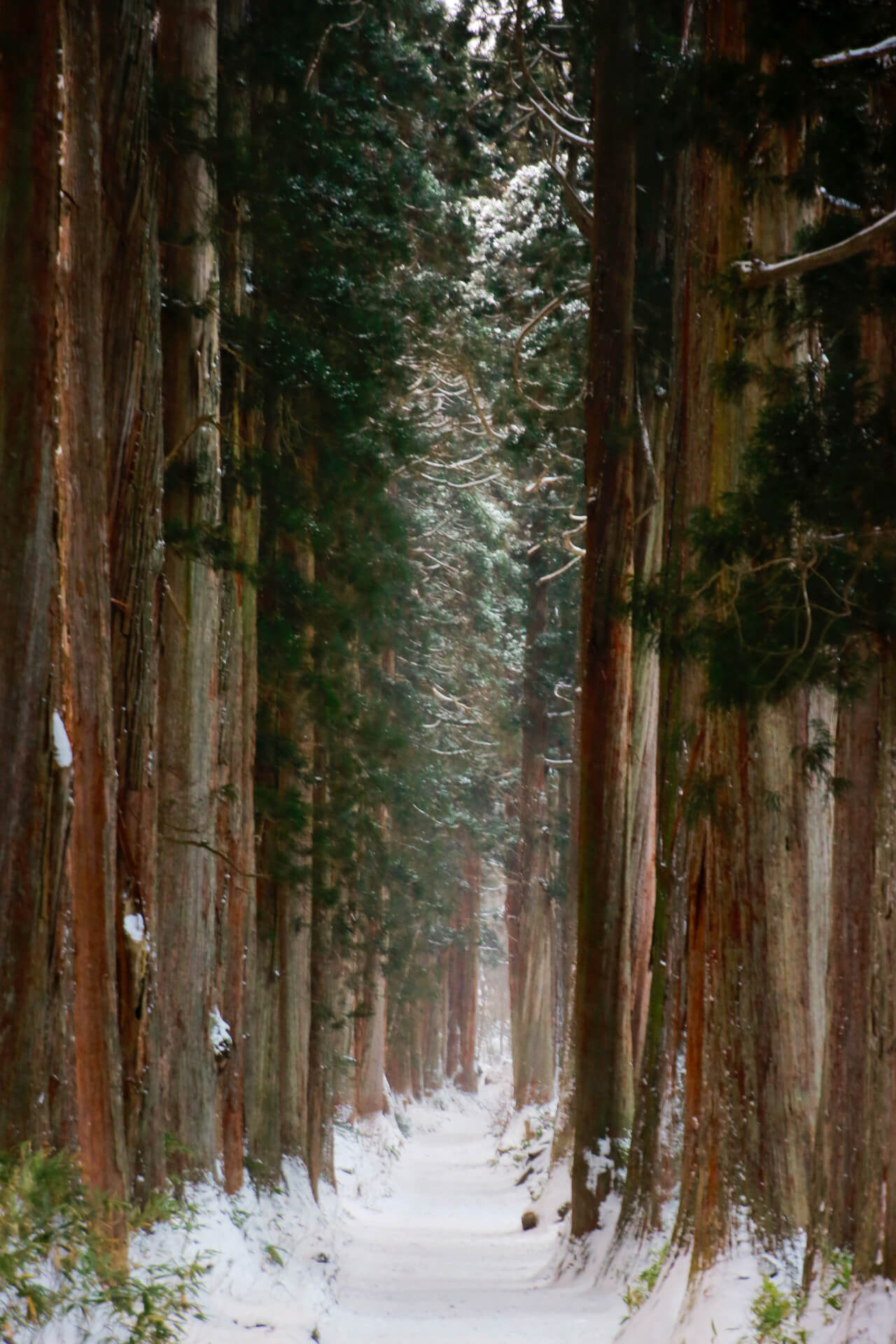
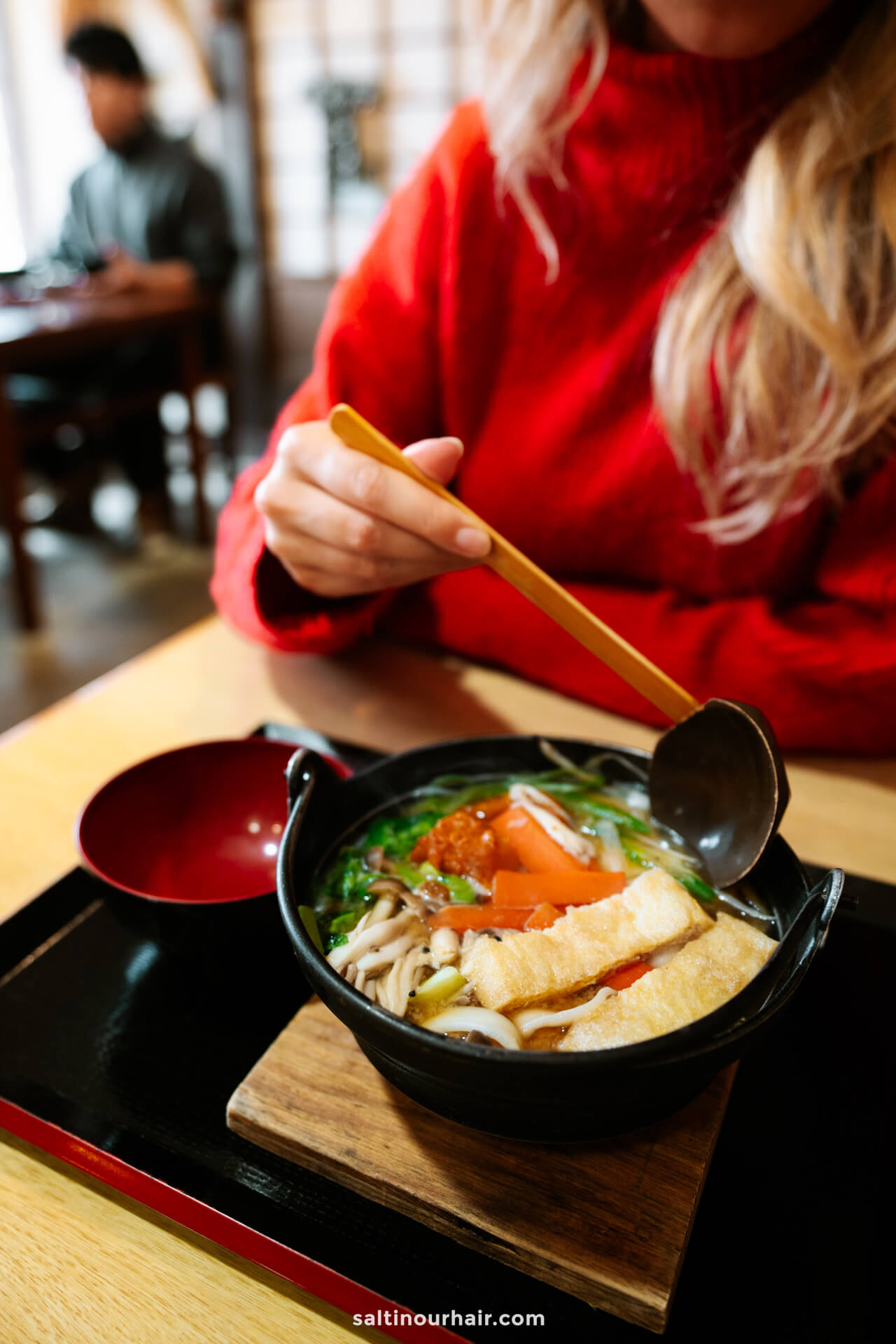
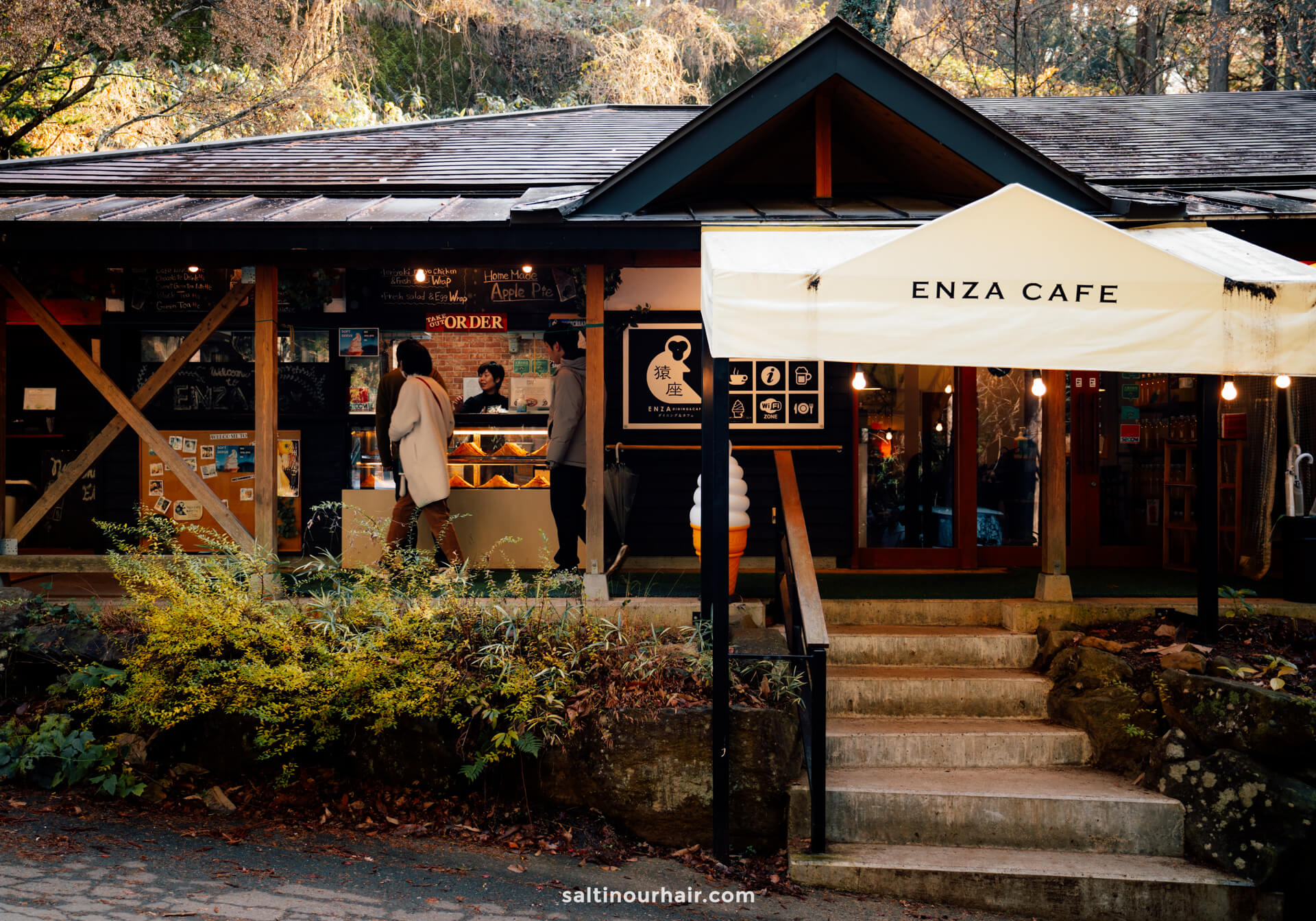
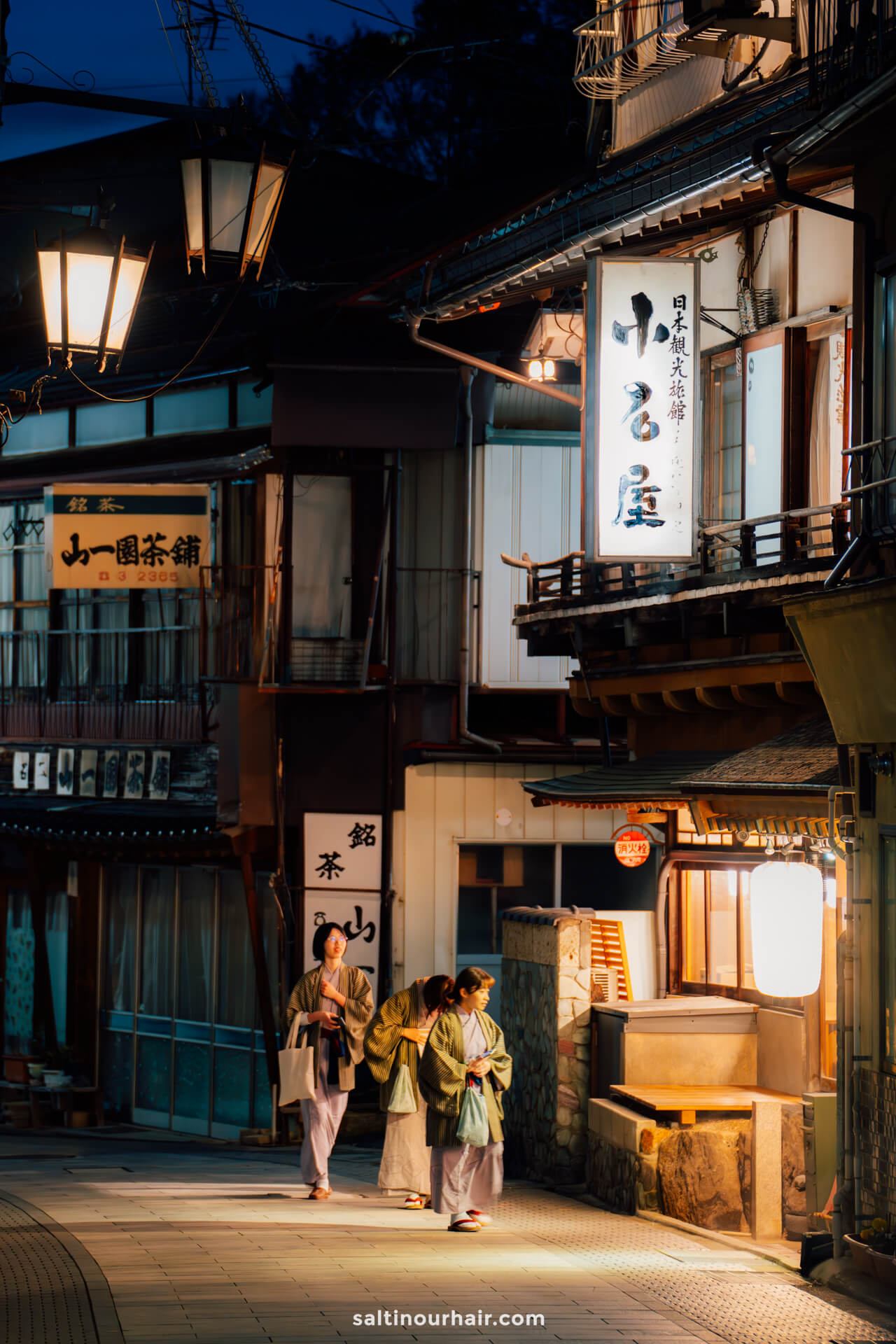
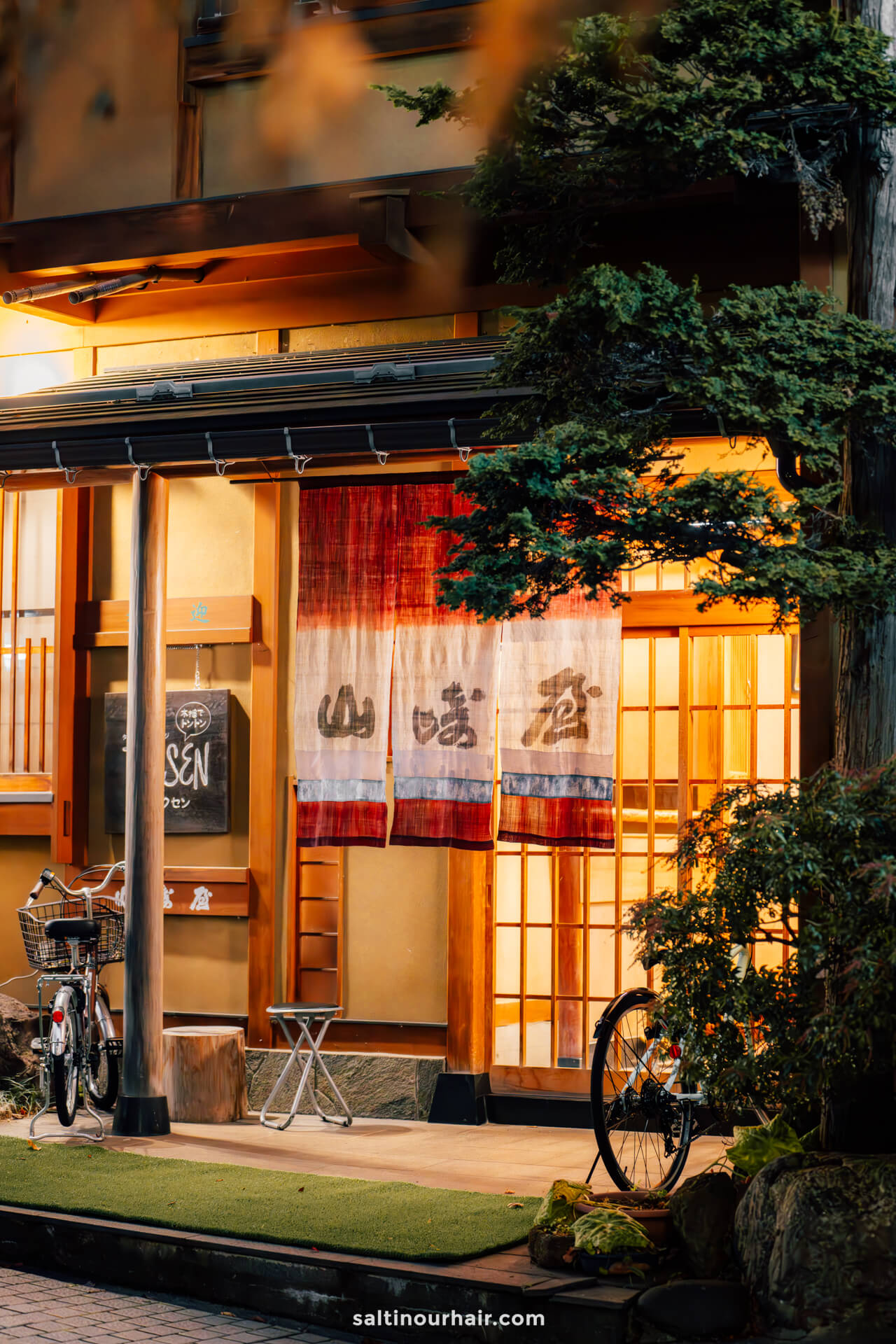
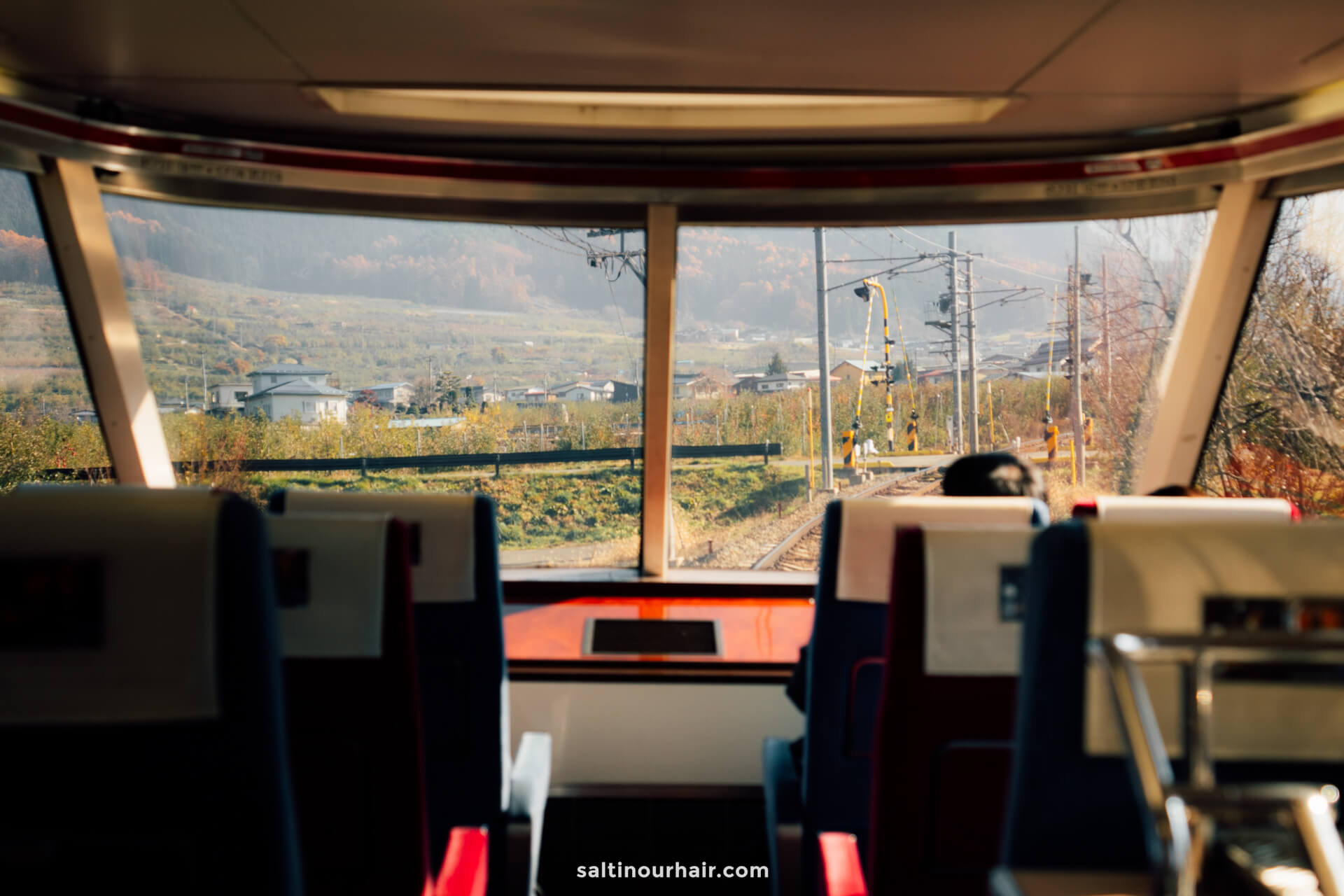

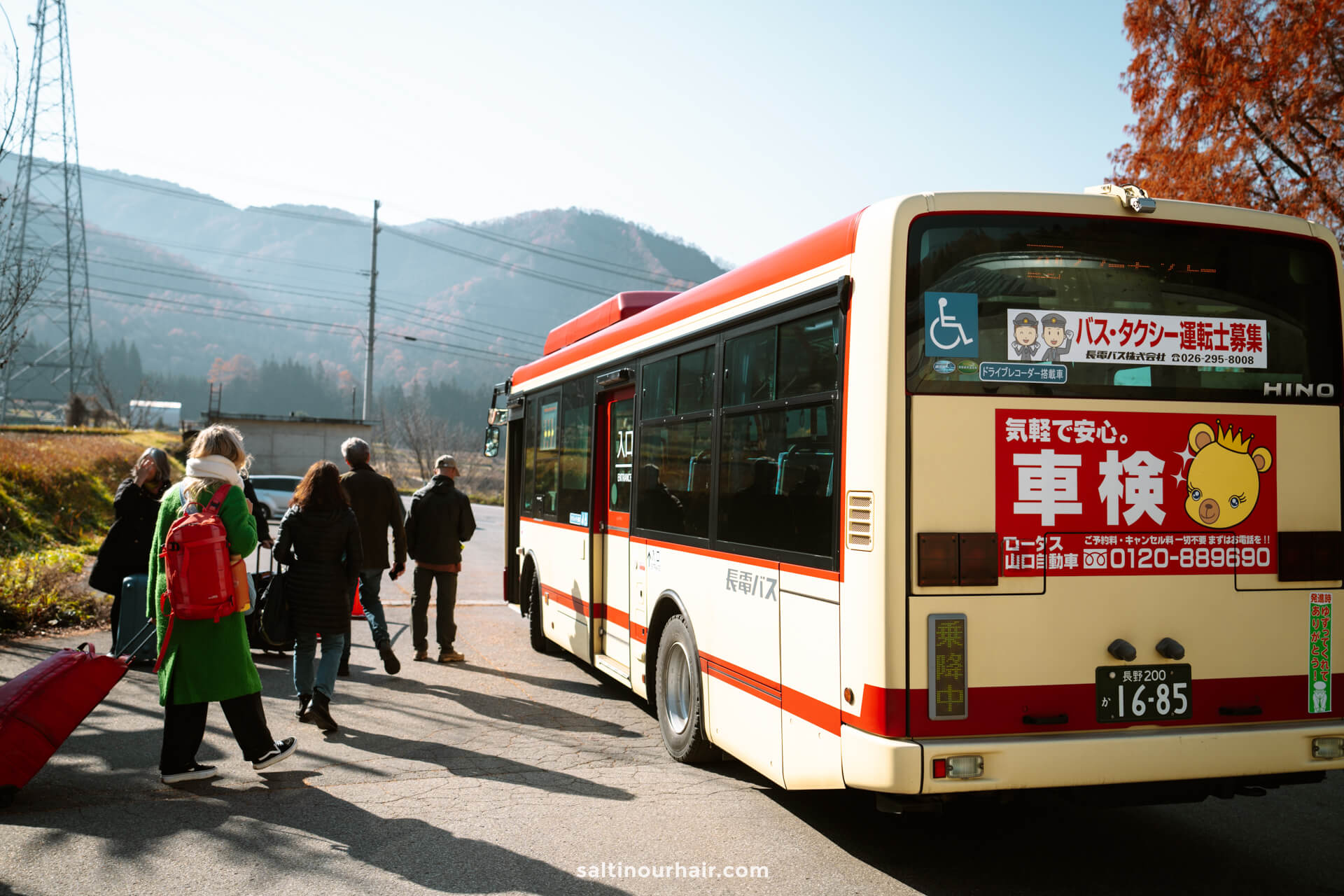
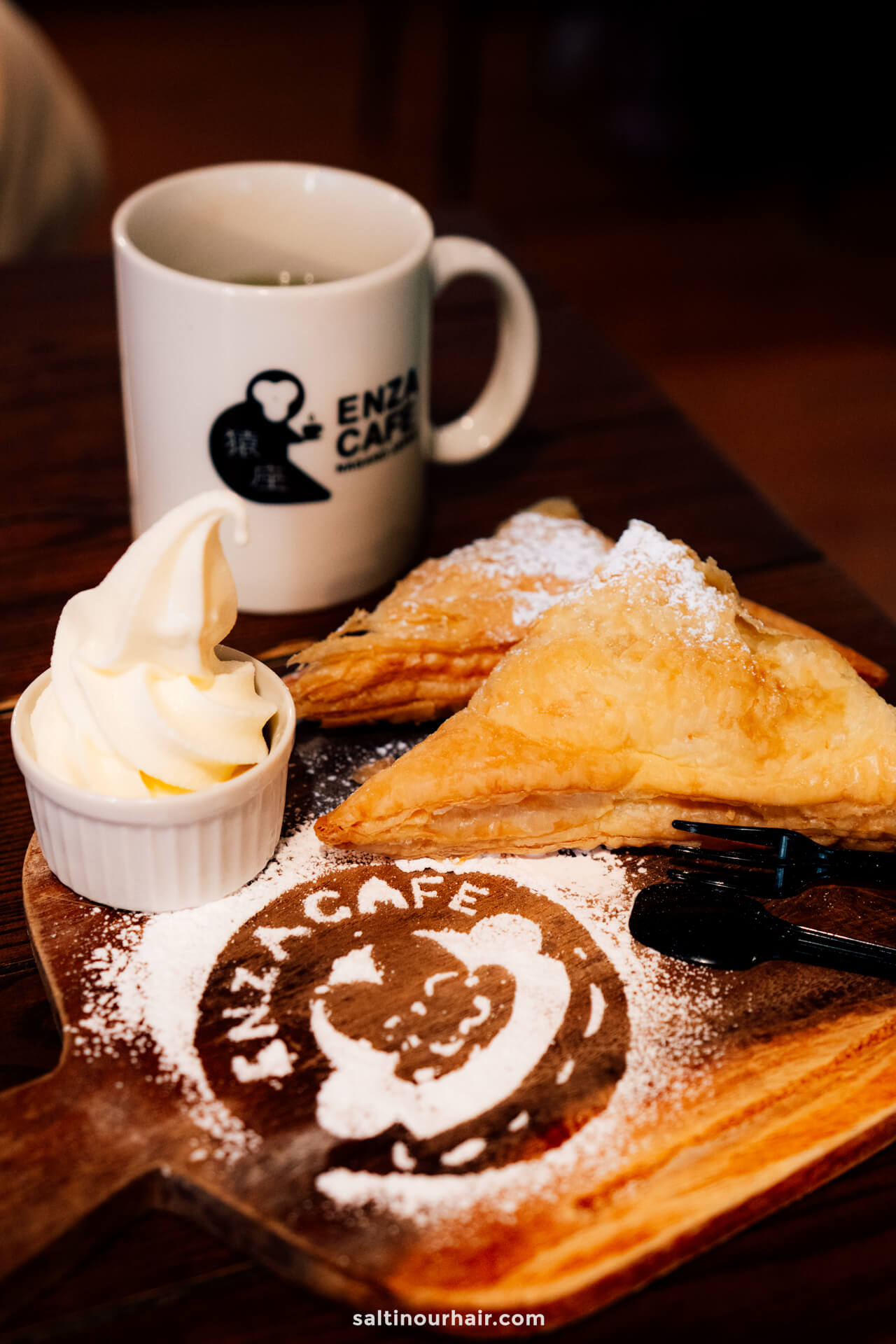
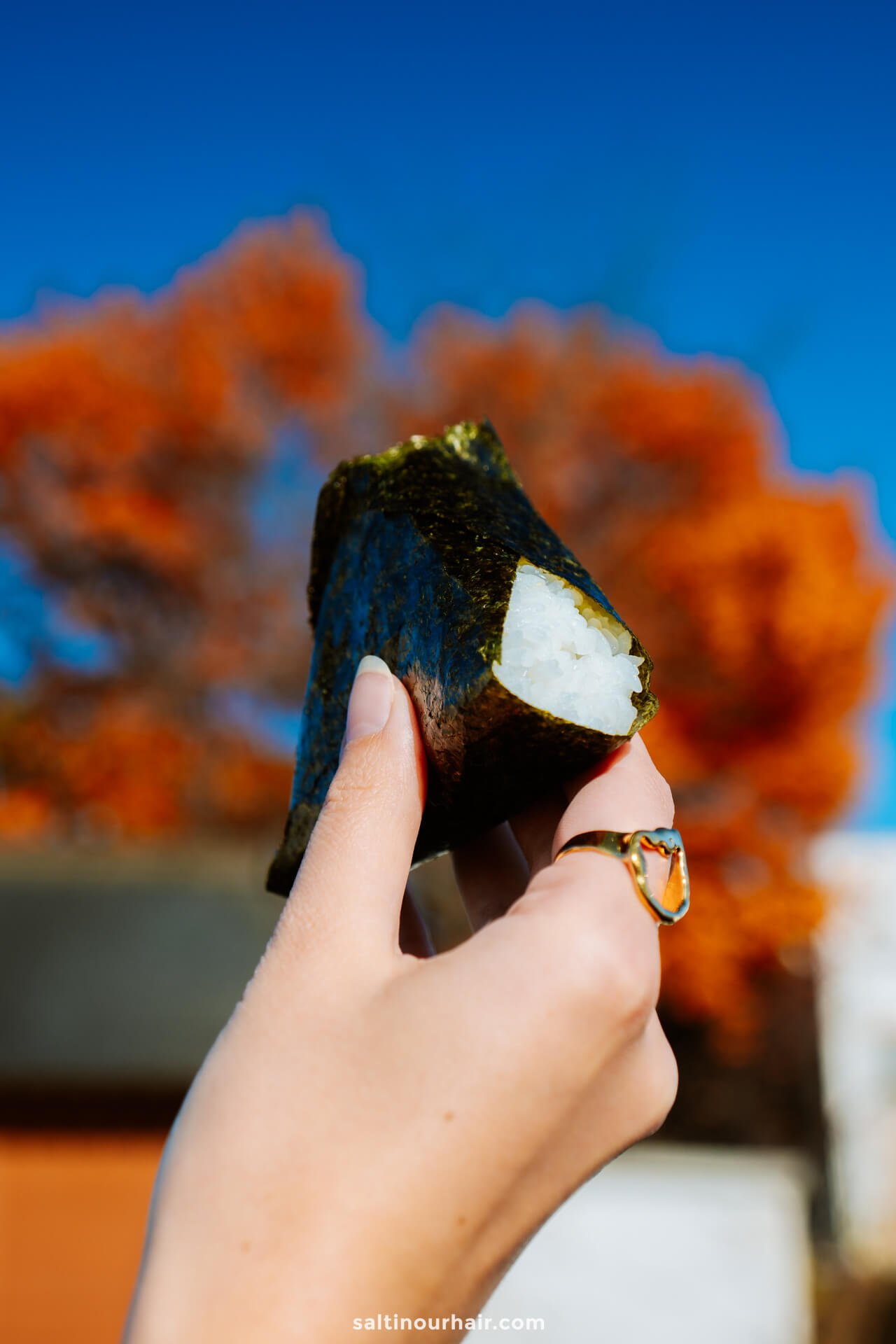
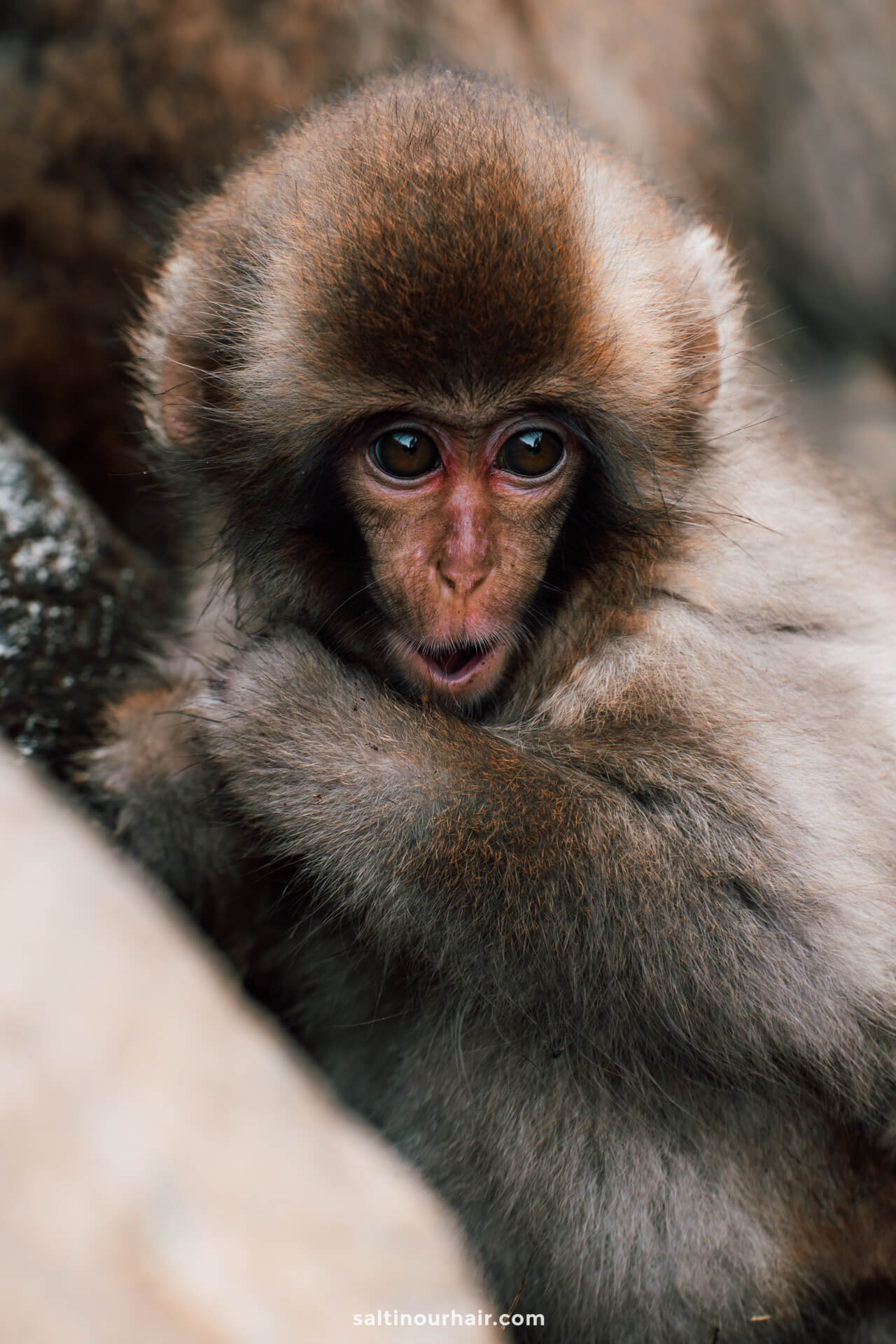



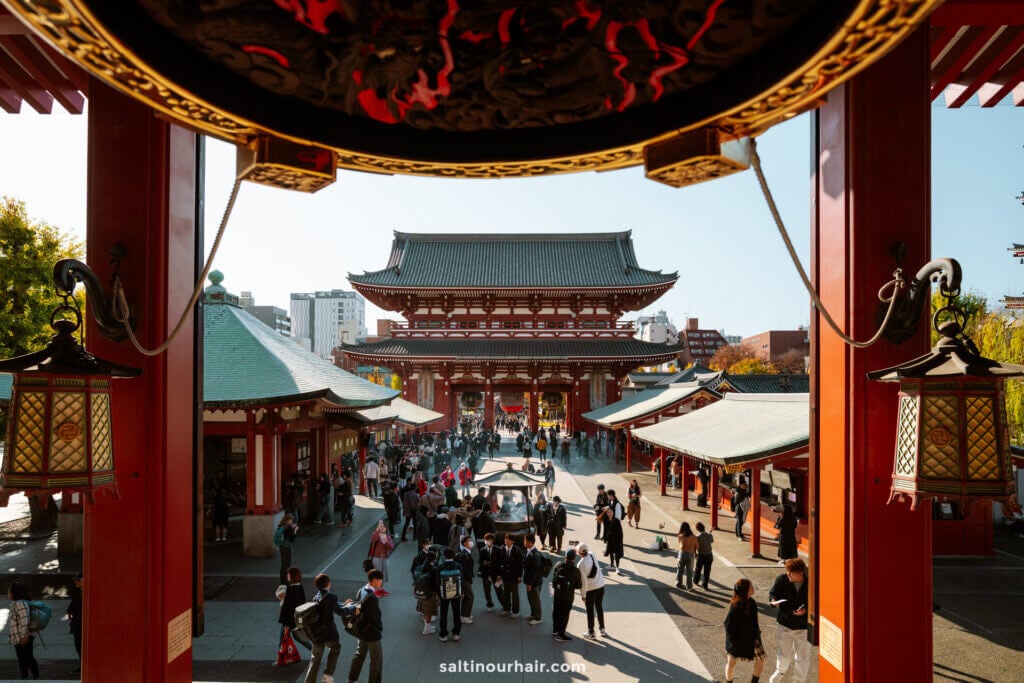

Looking for more travel information? Plan a chat with us for personalised travel advice or get an answer from the Salt in our Hair Travel Community on Facebook.